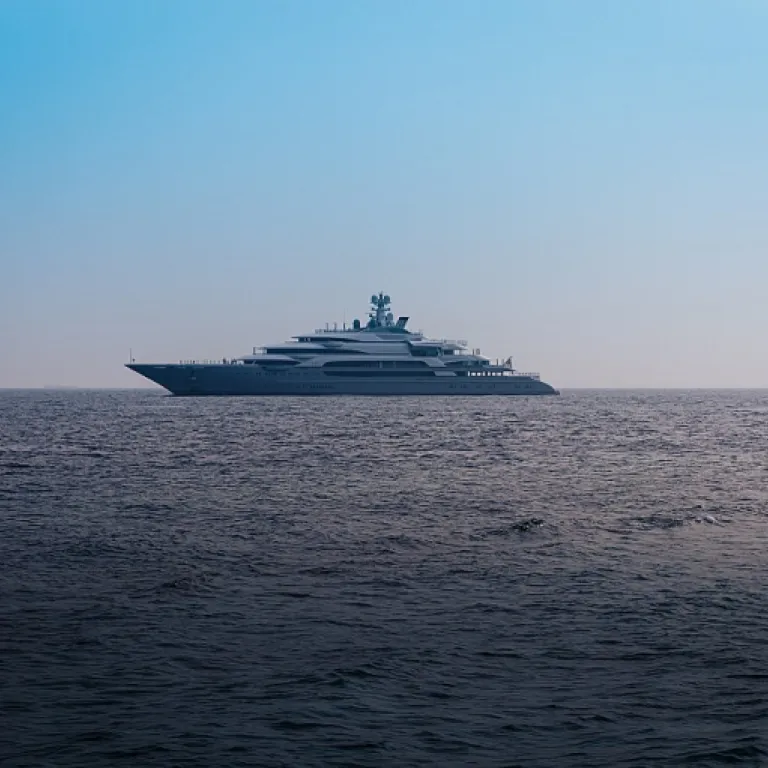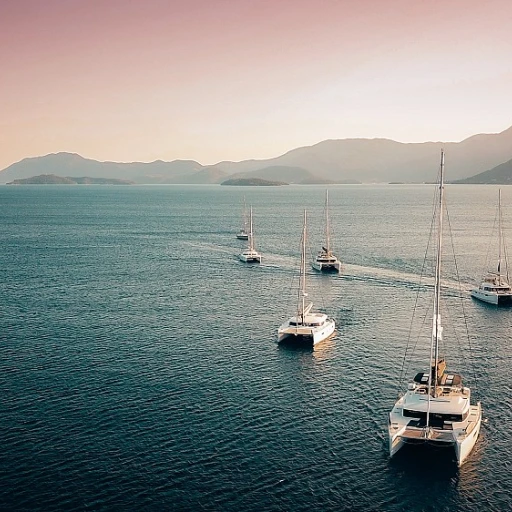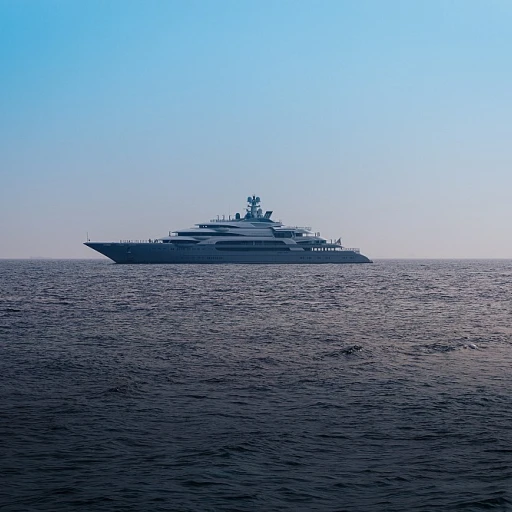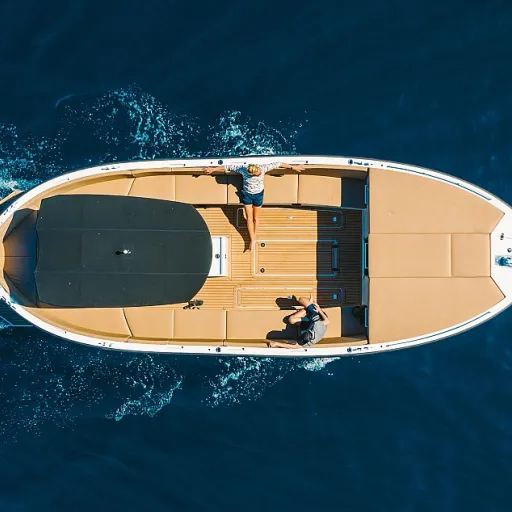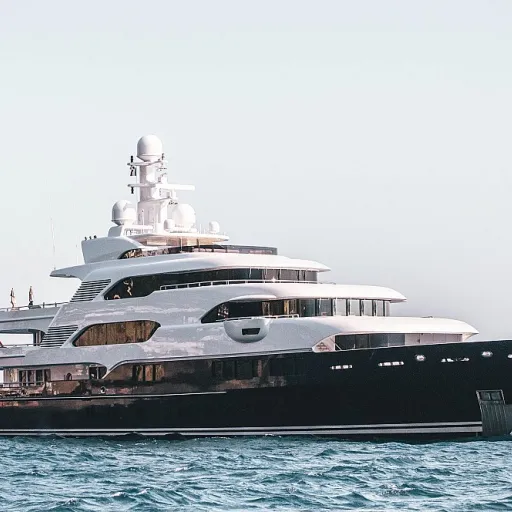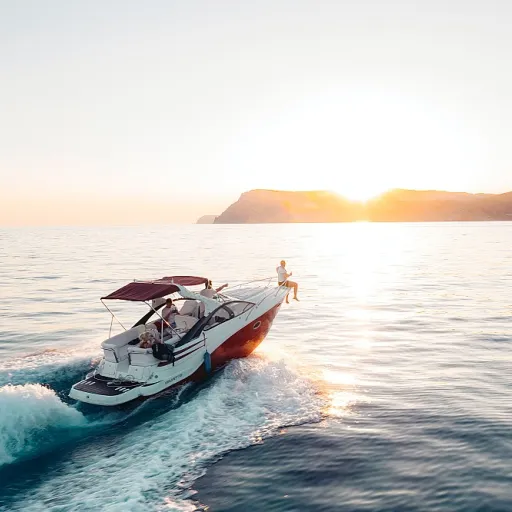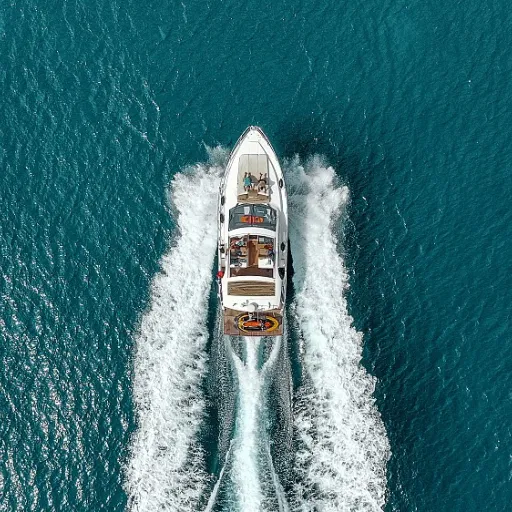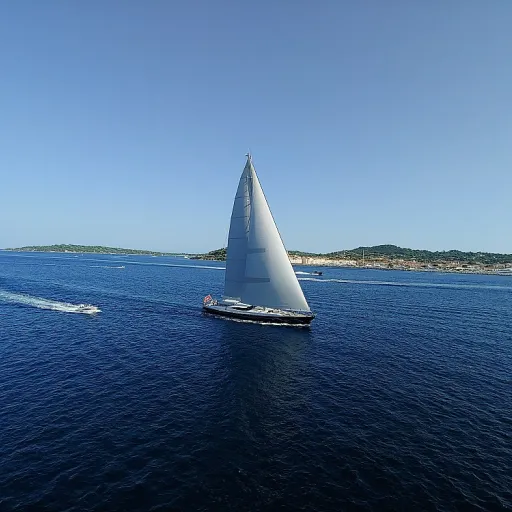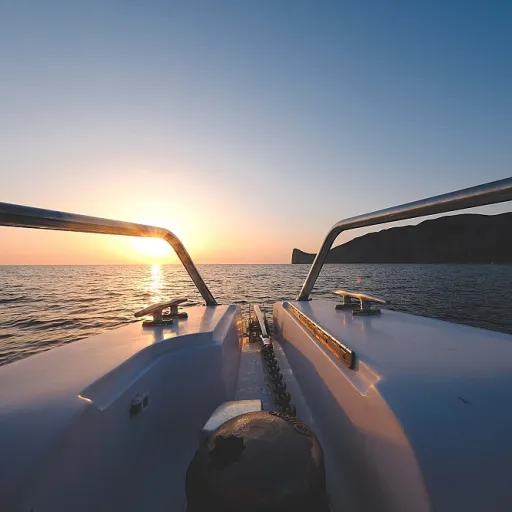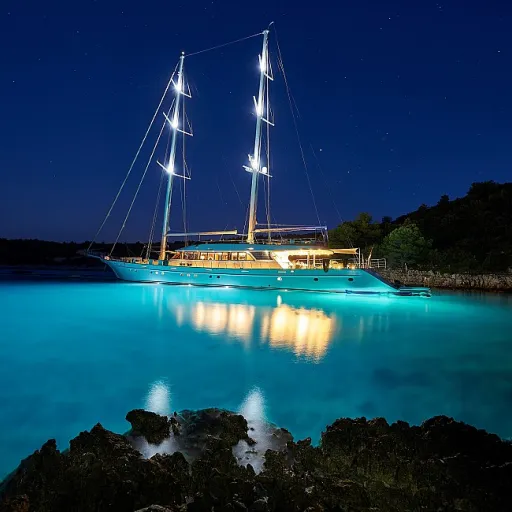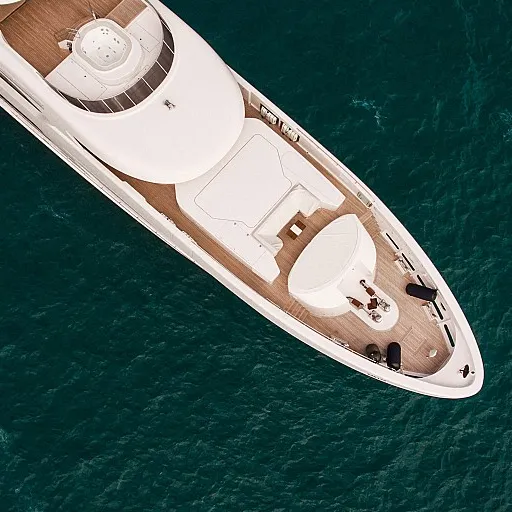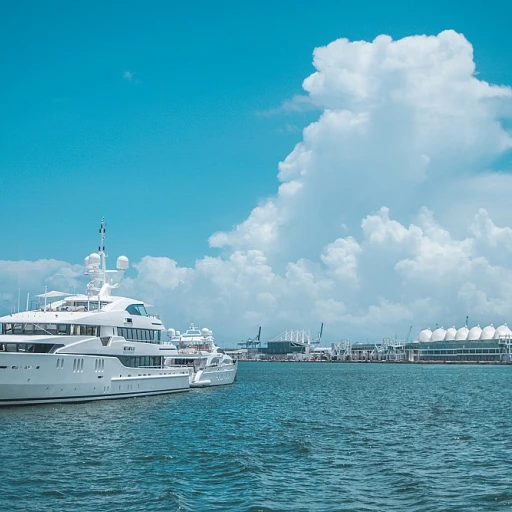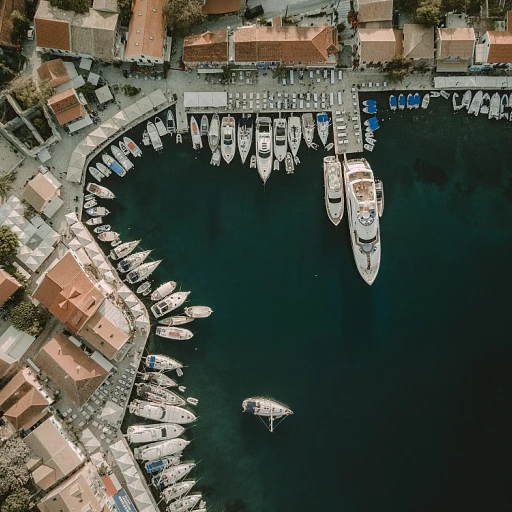The Evolution of Nautical Fabrics
The Rich History Behind Nautical Fabrics
The world of nautical fabrics boasts a fascinating history, with materials and designs that have remained integral to yacht construction and design. Over the years, there's been an evolution of these fabrics from basic, utilitarian items to sophisticated, digitally printed wonders often seen in stunning nautical themed settings. Originally, only a few choices were available, primarily heavy, upholstery fabric designed to endure the demands of the turbulent sea.
Today's offerings are more varied. With advancements in technology, materials like cotton fabric have become increasingly popular due to their blend of durability and aesthetic appeal. As the demands of the modern sailor have evolved, so has the fabric yard, which now includes contemporary favorites like navy blue and patterns resembling a coral reef or beach shells. Each yard of fabric tells its own story and adds a unique touch to the vessel’s decor.
The sale and consumption of nautical fabrics have seen a significant boost as the yachting community increases its focus on combining functionality with elegance. With options ranging from michael miller designs to riley blake prints, yacht enthusiasts now face the exciting challenge of choosing from a range of timeless treasures for quilting, sewing, or decor.
These textiles are no longer merely functional; they're products representing a synthesis of tradition and modernity, seen as much in a yacht's upholstery and sails as in its interior design. As with choosing any aspect of yacht design, understanding the foundations of these materials and their evolution is crucial. From the roots of simple seafaring fabrics to the diverse offerings available today, this history is a testament to craftsmanship and innovation, a journey akin to understanding the role of marine gearboxes in yacht performance.
Materials and Their Unique Properties
Material Marvels of Nautical Fabrics
Nautical fabrics have undergone a remarkable transformation over the years, driven by innovation and the demands of the yachting lifestyle. As enthusiasts seek both functionality and aesthetics, the choice of material becomes paramount. Whether it’s the vivid hues of navy blue or the subtle elegance of beach shells, each fabric is designed to enhance the nautical ambiance.
Natural fibers like cotton continue to be a staple due to their comfort and breathability. Cotton fabric yards find their way into many seafaring applications, from upholstery to quilting sewing projects. Those seeking themed fabric often turn to timeless treasures that capture the essence of the sea, coral reef design, or nautical blue motifs.
On the cutting edge, digitally printed fabrics have surged in popularity. These fabrics enable a quick turnaround and customization, giving designers the freedom to create unique upholstery fabric without the constraint of traditional dye lot limitations. Digitally printed nautical fabric allows for detailed, vibrant designs that are perfect for making a statement on the water.
Riley Blake and other renowned brands offer a wide range of fabrics for sail lovers, ensuring that there’s something for every project's price range and thematic needs. From elegant miller sea inspired motifs to the practical benefits of quick-drying materials, these products seamlessly blend visual appeal with performance.
When selecting fabrics, it’s essential to view each item within the context of its intended use. For instance, items meant for high-exposure settings benefit from treatments that enhance resistance to the harsh marine environment. Utilizing fabrics like Michael Miller’s collections or exploring options from retailers offering free shipping can make the ordering process smooth, even when items are left in stock.
Overall, the market for nautical fabrics is not just about function—it’s about crafting an experience. Each piece of fabric, meticulously chosen for its unique properties, plays an integral role in transforming a yacht into a personalized sea-faring haven. As you enhance your yacht's aesthetic, consider exploring our curated recommendations to
enhance your yacht fishing experience.
The Role of Nautical Fabrics in Yacht Design
The Integral Role in Yacht Design
Nautical fabrics play a vital role in yacht design, contributing both to the aesthetics and functionality of these magnificent vessels. Their selection is pivotal, as it impacts the overall yacht experience from the upholstery to the sails. Incorporating high-quality materials adds not just to the luxury but also to the durability and resilience against the harsh marine environment.
Upholstery fabrics, for instance, must withstand constant exposure to sea elements. Choosing navy blue or coral reef colors adds a themed elegance that blends with the vast sea scenery, creating a cohesive marine ambiance. Fabric selection isn't only about color and theme, such as timeless treasures or beach shells motifs, but also involves considering the fabric's resistance to salt and UV exposure. Upholstery fabric should offer quick drying properties, ensuring the fabric remains in good shape despite consistent exposure to moisture.
The materials used, including cotton fabric and digitally printed designs, need to be thoroughly evaluated for their ability to resist wear and maintain vibrant hues. Riley Blake fabrics and those from miller sea collections are known for their exquisite digitally printed items, which suit the refined tastes of yacht owners. These fabrics offer a unique blend of style and resilience, offering both beauty and strength.
Yacht design not only dwells on beauty but also on ensuring the fabric's sustainability. The selection process often considers the yard price per fabric, the order in which materials are laid out, and the stock left to tailor a yacht's interior that mirrors its external grandeur. The inclusion of eco-sensitive materials in its construction contributes to a greener future, covering the area of sustainability in nautical textiles well discussed in previous sections.
Sales teams and yacht designers work closely to view cart options and compare Michael Miller fabric yard prices to provide the best quality within their budget, ensuring the yacht not only meets the owner’s standards but also offers free shipping and seamless installation services. This is part of the fabric’s functional design, marrying practicality with elegance, serving both the passenger's comfort and yacht industry's evolving needs.
For more detailed insights into how fabric considerations influence yacht experiences, one may explore options available with
nautical inspirations catering to diverse tastes.
Sustainability in Nautical Fabrics
Embracing Sustainability in Marine Textiles
In recent years, sustainability has emerged as a vital consideration in the textile industry, and nautical fabrics are no exception. As yacht enthusiasts become more conscious of their ecological footprint, there's a significant shift towards eco-friendly options in fabric production. This transformation not only signifies innovation but also echoes a commitment to preserving the maritime environment.
One of the driving forces behind sustainable nautical textiles is the choice of materials. Fabrics such as "cotton" have gained popularity for their natural and biodegradable qualities. In addition, developments in "digitally printed" textiles allow for precise production, minimizing waste while ensuring vibrant and durable designs that can withstand marine conditions, such as "miller sea" and "beach shells." When exploring these eco-conscious options, features like "free shipping" can often sweeten the deal for yacht owners keen on sustainable choices without inflating their budget.
Manufacturers are making strides in creating fabrics that not only align with eco-friendly values but also perform impeccably under harsh sea environments. The move towards "upholstery fabric" that resists both saltwater and UV rays reflects an understanding of the practical demands placed on these materials. The result is a robust "nautical fabric" that offers functionality alongside environmental responsibilities.
The demand for sustainable nautical materials is driven in part by the visibility of high-profile initiatives and the pressure on companies to demonstrate environmental stewardship. For instance, the advancement of "nautical sea" products reinforces the industry’s pledge to eco-compliance. The transition isn't just a marketing move; it represents a broader mission to ensure yacht adventures remain enjoyable for future generations.
Balancing cost and sustainability remains a challenge. Eco-friendly options often come with a higher "price," which can affect "sale" and "order" quantities. However, as technology progresses and consumer demand increases, the "price" will stabilize, making sustainable nautical fabrics more accessible. Companies that produce "fabric yard" and related "item" are already revamping their "millers," ensuring that "michael miller" and others can meet these growing expectations.
In conclusion, sustainability in nautical fabrics is about more than just environmental care — it’s an integral part of yacht design's future. As innovations continue and awareness grows, eco-friendly materials will likely become the norm, enhancing both the quality of marine life and the yacht experience.
Challenges in the Nautical Fabric Industry
Overcoming Obstacles in a Competitive Market
Navigating the complex world of nautical fabrics presents numerous challenges, particularly in a market where competition is fierce, and innovation is key. One of the primary hurdles faced by the industry is balancing the demand for quick manufacturing and low-priced items with the high standards expected by luxury yacht designers. Fabrics, such as those digitally printed by well-known brands, often undergo rigorous testing to ensure they meet the durability and aesthetic requirements for both the interior and exterior environments of a yacht.
The shift towards digital fabrication processes, like digitally printed nautical fabrics and inkjet technologies, offers exciting possibilities for customization and rapid production. However, this also introduces a particular pressure on mills to maintain the integrity of traditional fabric-making techniques, such as those used in producing high-quality cotton or upholstery textiles. As a result, manufacturers must expertly blend these modern methods with classic approaches to maintain the reputation of their products, whether it be a nautical sea pattern or a more abstract design like coral reef themed fabric.
Inventory management further complicates the landscape. Mills need to ensure that there is enough left in stock to meet the high demand during peak sale periods. Maintaining the view cart experience seamless with free shipping options becomes crucial in staying competitive. This inventory challenge is more acute for popular items like navy blue or themed fabrics depicting timeless treasures or beach shells.
Supply chain issues and fluctuating material costs also pose significant challenges. With current global material shortages affecting the availability of both raw goods and finished fabric items, maintaining competitive pricing without sacrificing quality is a constant struggle.
Lastly, as yacht designs grow increasingly eco-conscious, the shift towards sustainability amplifies the challenges for those within the fabric miller sea production sector. Embracing sustainable practices, while meeting new environmental standards, can drive up production costs, making it essential for the industry to innovate without inflating prices for the end consumer.
Each of these challenges prompts industry leaders to adapt while still delivering fast, effective, and luxurious solutions that meet both consumer expectations and environmental considerations. Addressing these challenges head-on will determine which companies can continue to successfully navigate the increasingly competitive waters of the nautical fabric industry.
Future Trends in Nautical Fabrics
Navigating the Future of Nautical Fabrics
As we look towards the future, the nautical fabric industry stands on the precipice of exciting transformation, driven by innovation and sustainability. A view into the horizon suggests several intriguing trends, each poised to reshape how we think about fabrics at sea.
Firstly, the rise in popularity of digitally printed fabrics is a noteworthy progression. This method, widely favored by manufacturers, offers the benefit of customizable and themed products, allowing yacht designers to craft interiors with unique nautical flair. Items adorned with beach shells and coral reef motifs or in timeless treasures patterns depict the sea’s aesthetics vividly. Such nautical and upholstery fabrics not only contribute to visual appeal but also provide functional value, often featuring cutting-edge properties tailored for marine life.
Sustainability continues to be a central focus, as discussed earlier in the realm of recycling and eco-friendly fabric choices. The demand for sustainable cotton fabric, particularly in navy blue or other sea-inspired hues, is gaining traction. Using eco-conscious materials helps ensure that each fabric yard contributes positively to the environment, while free shipping and competitive prices make these options more accessible to consumers.
Additionally, the increasing integration of technology in fabric manufacturing cannot be overlooked. Futuristic developments in this sphere include smart fabrics with integrated sensors that can monitor environmental conditions, providing vital data for enhancing both comfort and safety on the open sea.
Challenges persist, but industry leaders are adapting to these evolving demands by exploring new materials and techniques at the fabric miller level. Coupled with adept responses from brands known for their nautical offerings—as seen with internationally recognized names in fabric nautical and upholstery fabric—there’s a clear momentum towards transparency and innovation.
Finally, collaboration between fabric producers and yacht designers is pivotal. Industry events and expositions showcase the latest advancements, with trends driven by consumer interest in stylish, durable, and environmentally responsible fabric solutions. Whether it's quick sale items with left stock discounts or exclusive miller sea collections, the future teems with potential.
In summary, the nautical fabric industry sails forward with a forward-thinking approach, balancing tradition with modern innovation to meet the evolving needs of yacht aficionados worldwide. This dynamic industry, guided by a deep respect for the sea, continues to spawn developments that promise to enhance the alluring world of yacht design and upholstery.
-large-teaser.webp)

